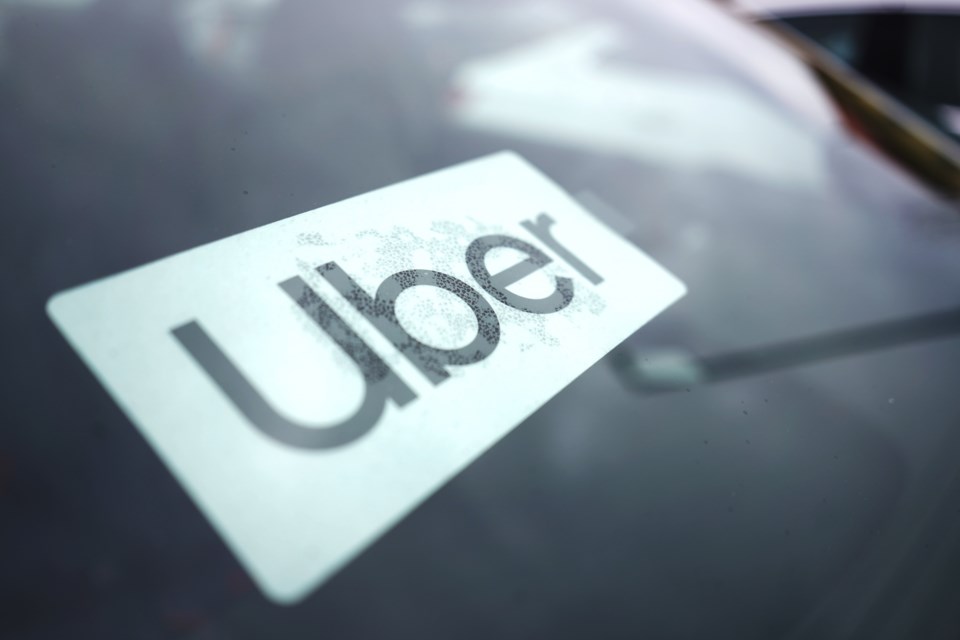The Biden administration proposed new standards Tuesday that could make it more difficult to classify millions of workers as independent contractors and deny them minimum wage and benefits.
The U.S. Department of Labor rule, which could take months to take effect, would replace a scrapped Trump-era standard that had lowered the bar for classifying employees as contractors, workers who are not covered by federal minimum wage laws and are not entitled to benefits including health insurance and paid sick days.
The reaction in markets for major gig companies was immediate. Shares of the ride-hailing company Lyft fell 12% while rival Uber tumbled about 10%, although both companies dismissed the significance of the new proposal and its potential to affect their business.
In one key change, employers are required to consider whether the work provided is an integral part of their business. That could affect app-based companies that rely almost entirely on freelance workers to provide their services. The Trump-era rule had narrowed that criteria to whether the work in part of an integrated unit of production, and gave more weight to other considerations such as the worker's opportunity to make a profit or loss.
The new rule directs employers to consider six criteria for determining whether a worker is an employee or a contractor, without predetermining whether one outweighs the other. The criteria also include the degree of control by the employer, whether the work requires special skills, the degree of permanence of the relationship between worker and employer and the investment a worker makes, such as car payments.
The rule, however, does not carry the same weight as a law passed by Congress or state legislatures, nor does it specify whether any specific company or industry should reclassify their workers. Rather, it offers an interpretation of who should qualify for protections under the 1938 Fair Labor Standards Act.
The rule could bolster labor advocates seeking to challenge worker classification in courts, or state lawmakers seeking to pass stricter laws for designating workers as contractors, said Patricia Campos-Medina, executive director of the Worker Institute at Cornell University’s School of Industrial and Labor Relations.
“It creates a base from which to work and it discourages predatory companies that want to lower their costs by denying basic rights to their employees,” said Campos-Medina.
Still, there is room for interpretation since some companies might meet one set of criteria for contractor designation, but not others.
“I don't think it will stop the debate," Campos-Medina said. “The only thing the federal rule does is it creates a basic standard for evaluation.”
The Labor Department said misclassifying workers as independent contractors denies those workers protections under federal labor standards, promotes wage theft, allows certain employers to gain an unfair advantage over businesses, and hurts the economy.
“While independent contractors have an important role in our economy, we have seen in many cases that employers misclassify their employees as independent contractors, particularly among our nation’s most vulnerable workers,” said Secretary of Labor Marty Walsh in a prepared statement.
Wedbush analyst Dan Ives said the proposal would constitute a major change for workers and employers from previous years.
“A classification to employees would essentially throw the business model upside down and cause some major structural changes if this holds,” Ives wrote.
But both Uber and Lyft dismissed the potential impact of the new rule.
“Today’s proposed rule takes a measured approach, essentially returning us to the Obama era, during which our industry grew exponentially” CR Wooters, head of federal affairs at Uber, said in a statement.
In a blog post, Lyft said the company had expected this change since the start of the Biden administration.
“Importantly this rule: Does not reclassify Lyft drivers as employees. Does not force Lyft to change our business model,” the company said.
The new rule is subject to a 45-day period ending Nov. 28 during which stakeholders can submit comments, and may not take effect for months.
Gig economy giants have weathered past attempts in the U.S. to require their drivers to be classified as employees.
In 2020, to exempt drivers for app-based companies from a state law requiring them to be designated as employees. Uber, Lyft and other companies had spent $200 million campaigning in favor of the proposition. However, a as unconstitutional last year, setting up a legal fight that could end up in the California Supreme Court.
App-based companies have long argued that their workers want the flexibility to set their own hours as contract workers.
Beyond gig workers, the new law has the potential to change the circumstances of millions of custodians, truck drivers, waiters, construction workers and others, according to the Labor Department.
Workers themselves are divided over the debate. In California, for example, seeking to preserve their independent contractor status shut down operations in the Port of Oakland last summer to protest the state's gig workers law. But other truckers have successfully fought to force their companies to classify them as employees with full benefits.
Michelle Chapman And Alexandra Olson, The Associated Press



